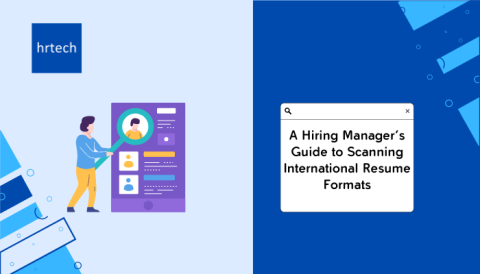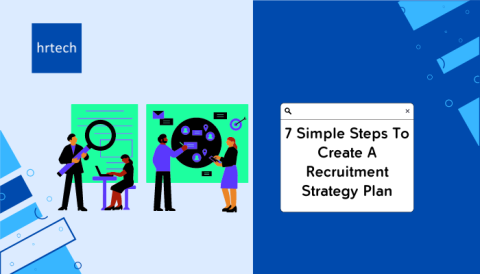Introduction
Recruiting blue-collar workers has come a long way from the days of newspaper job listings, bulletin board postings, and in-person walk-in applications. Traditionally, employers relied on manual screening, word-of-mouth referrals, and lengthy hiring processes to find the right talent. This often resulted in delays, mismatches in job roles, and higher turnover rates.
Today, technology is revolutionizing blue-collar recruitment, making the process faster, smarter, and more accessible. AI-driven job platforms, mobile-first hiring apps, and automated screening tools are reshaping how companies hire and how workers find jobs. These advancements are not just about convenience—they are about bridging the labor demand-supply gap, ensuring better job matches, and improving workforce efficiency.
Platforms like JobShine are at the forefront of this transformation, offering cutting-edge solutions to streamline your hiring processes.
In this blog, we’ll explore the key technological innovations transforming blue-collar hiring, the benefits of digital recruitment, and the challenges that come with it.
What is Blue-Collar Hiring?
Blue-collar hiring refers to the recruitment of skilled and semi-skilled workers in industries that require manual labor and technical expertise. These jobs are essential in sectors like construction, manufacturing, logistics, and hospitality. Unlike white-collar roles, which are typically office-based, blue-collar jobs involve hands-on work and practical skills.
Key Aspects of Blue-Collar Hiring:
- Focus on practical skills: Employers prioritize experience, certifications, and technical knowledge over formal education.
- Industries involved: Common sectors include construction, manufacturing, transportation, warehousing, and maintenance.
- Job types: Roles range from electricians, welders, and plumbers to machine operators, truck drivers, and warehouse staff.
- Hiring process: Recruitment often includes skill assessments, trade certifications, and on-the-job training instead of traditional degree requirements.
- Growing demand: Due to labor shortages, businesses are adopting new hiring strategies, such as AI-powered job matching, mobile-friendly applications, and digital recruitment platforms.
With industries facing a skilled labor shortage, companies are increasingly leveraging technology and streamlined hiring practices to attract and retain blue-collar talent efficiently.
Key Technological Advancements in Blue-Collar Hiring
As industries face growing labor demands, technology is bridging the gap by streamlining job matching, automating hiring processes, and expanding accessibility. Here’s a closer look at the key innovations shaping the future of blue-collar recruitment.
1. AI & Data-Driven Job Matching: Smarter Hiring Decisions
Artificial Intelligence (AI) is one of the most significant game-changers in recruitment today. Instead of manually sifting through hundreds or thousands of job applications, AI-driven platforms analyze candidate profiles, match skills with job requirements, and predict the best job-to-candidate fit.
How AI Improves Hiring Efficiency:
- Automated resume screening: AI filters applications based on skills, experience, and qualifications, reducing hiring time.
- Predictive job matching: AI predicts which candidates are more likely to stay long-term, improving retention rates.
- Personalized job alerts: AI analyzes candidates’ preferences and sends job recommendations that align with their skills.
Real-World Impact of AI in Recruitment:
Platforms like JobShine have successfully reduced hiring time by implementing AI-driven job matching. Employers using AI-powered recruitment tools report a significant improvement in candidate retention due to better job-role alignment.
2. Mobile-First Recruitment: Jobs at Your Fingertips
With over 89% of job seekers using mobile devices to look for work, companies are increasingly shifting towards mobile-first recruitment strategies. Blue-collar workers, in particular, often rely on smartphones over desktops, making mobile accessibility a top priority for recruiters.
Key Mobile Recruitment Trends:
- One-tap applications: Job seekers can apply for jobs instantly via mobile apps.
- Instant job alerts & push notifications: Workers get notified as soon as a relevant job is posted, improving response time.
- AI-powered chatbots for job search assistance:JobShine integrates with WhatsApp, Messenger, and Telegram, enabling candidates to search and apply for jobs anytime, anywhere.
3. Automated Screening & Video Interviews: Faster & Fairer Hiring
Recruiters once spent weeks reviewing resumes and conducting face-to-face interviews. Now, automated screening tools and AI-driven video interviews have accelerated the process while enhancing candidate quality.
How Technology Enhances Screening & Interviews:
- AI-powered pre-screening assessments: Automatically ranks candidates based on skills and experience.
- AI-driven video analysis: Analyzes tone, speech patterns, and non-verbal cues to assess suitability.
- Flexible pre-recorded interviews: Candidates can record their answers at their convenience, and recruiters can review them on-demand.
So, how exactly does tech make recruitment more efficient for both businesses and job seekers?
The Benefits of Tech-Enabled Recruitment
Technology has revolutionized blue-collar hiring, making the process faster, smarter, and more accessible. From AI-powered job matching to mobile recruitment and automated screening, digital tools are ensuring companies find the right workers quickly and efficiently. Here’s how tech-driven hiring is transforming the game for both employers and job seekers.
1. Faster Hiring & Improved Efficiency
In the past, filling blue-collar positions could take weeks due to manual processes, endless paperwork, and inefficient job postings. Today, AI-driven automation and mobile-first hiring strategies have transformed recruitment, allowing companies to fill vacancies in just days.
Key Advantages:
- Reduced administrative workload – Recruiters can focus on talent strategy instead of paperwork.
- AI-powered candidate shortlisting – Saves time by filtering and ranking candidates based on skills and experience.
- Accelerated onboarding – Faster hiring reduces workforce shortages, especially in industries like logistics, construction, and healthcare.
Did You Know?
85% of HR professionals report that AI-powered recruitment significantly reduces hiring time, making it easier to meet business demands quickly.
2. Better Candidate Matching & Higher Retention Rates
A bad hire isn’t just frustrating—it’s expensive. Companies lose time and resources when employees quit due to poor job fit. AI and predictive analytics are changing the game by ensuring that candidates are placed in roles that truly match their skills, experience, and interests.
Why This Matters:
- Employees experience higher job satisfaction, leading to a more motivated workforce.
- Lower turnover rates mean businesses spend less on rehiring and retraining.
- Productivity improves when workers feel they are in roles suited to their abilities.
Real-World Impact:
Companies using AI-driven recruitment tools have seen a 25% increase in employee retention rates, proving that smarter hiring leads to longer employment durations and better overall workplace stability.
3. Wider Reach & Greater Accessibility
Traditional recruitment was often limited to local job fairs and newspaper ads, making it difficult to connect with a diverse talent pool. Now, digital platforms and AI-powered job advertising are helping employers expand their search across broader regions, including remote and underrepresented areas.
How Technology Enhances Access:
- AI-powered job ads – Target the right candidates at the right time, improving outreach.
- Mobile-based recruitment – Allows job seekers to apply from anywhere, breaking geographical barriers.
- Virtual job fairs & online interviews – Help connect workers with opportunities without needing to travel.
Success Story:
A construction company in Singapore used mobile job recruitment tools and successfully expanded its workforce by 20% in just six months. By leveraging digital hiring solutions, they reached workers in rural areas who previously lacked access to job opportunities.
Tech-enabled recruitment is no longer an option—it’s a necessity for companies looking to stay ahead in a competitive job market.
Platforms like JobShine reduce administrative loads, allowing companies to focus more on strategic talent acquisition.
But hold up! It’s not all smooth sailing; let’s dive into some hurdles businesses face when embracing this tech-forward hiring approach.
Challenges & Considerations in Tech-Enabled Hiring
Despite the benefits, technology-driven recruitment comes with challenges that companies must address.
1. Data privacy & security concerns
- Issue: Storing candidate data online increases the risk of data breaches and misuse.
- Solution: Implement strong cybersecurity measures, including data encryption, GDPR compliance, and multi-factor authentication for recruitment platforms.
2. Digital literacy gaps among workers
- Issue: Some blue-collar workers lack digital skills to navigate AI-driven job portals.
- Solution: Employers can offer digital literacy training programs, providing workers with step-by-step guidance on online job applications.
3. Balancing automation with a human touch
- Issue: While automation speeds up hiring, candidates may feel disconnected from the recruitment process.
- Solution: Combine AI with human interactions, ensuring recruiters engage personally with shortlisted candidates.
Best Practice: A hybrid approach—AI for screening, human recruiters for final interviews—ensures a balanced, candidate-friendly experience.
And if you’re wondering what’s next for blue-collar recruitment, let’s take a peek into the future!
Where is Blue-Collar Recruitment Headed?
The Future of Blue-Collar Hiring is Digital. In the coming years, technology will further transform the recruitment process with advancements such as:
- AI-driven workforce forecasting to predict job market trends.
- Augmented reality (AR) and virtual reality (VR) training programs for skills enhancement.
- Blockchain-based digital resumes for verified credentials and background checks.
- Voice-command job searches for greater accessibility.
Companies that embrace AI, mobile-first recruitment, and automation will gain a competitive edge in hiring, ensuring they attract top blue-collar talent quickly and efficiently.
JobShine‘s comprehensive digital recruitment tools expand employer reach, even to those in remote areas, maximizing access to diverse talent.
Conclusion
Technology has redefined blue-collar recruitment, making the hiring process faster, more accurate, and more inclusive. AI-powered job matching, mobile-first hiring, and automated screening tools enhance efficiency, improve job satisfaction, and expand talent pools. However, companies must address challenges like data security and digital literacy gaps to fully leverage these advancements.
For businesses looking to streamline recruitment and connect with top talent, JobShine offers an AI-powered hiring platform that simplifies job searches for workers and makes hiring seamless for employers. With mobile-friendly job applications, automated candidate screening, and AI-driven job matching, JobShine ensures that both employers and job seekers find the perfect fit—faster and smarter.
Want to revolutionize your hiring process? Visit JobShine today and experience the future of blue-collar recruitment!





